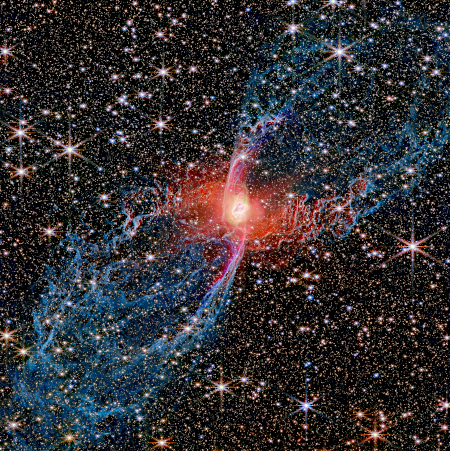Two overnight launches
The beat goes on: Since yesterday there were two more successful rocket launches, from India and SpaceX.
First, SpaceX last night launched its fourth Bandwagon mission carrying 18 mid-sized smallsat payloads, its Falcon 9 rocket lifting off from Cape Canaveral in Florida. The first stage completed its third flight, landing back at Cape Canaveral. The fairings completed their 11th and 13th flights respectively.
Bandwagon rideshare missions are dedicated missions by SpaceX. SpaceX’s SmallSat Rideshare Program provides small satellite operators with regularly scheduled, dedicated Falcon 9 rideshare missions to mid-inclination orbits for ESPA-class payloads, starting at $300,000 per mission and including up to 50kg of payload mass.
Among these payloads two were most notable, a South Korean military surveillance satellite and a demo module for the space station startup Vast. With the latter, the company will use this unmanned orbiting prototype to test operations to prepare for the launch in the spring of its full-sized manned demo station, Haven-1.
Next India’s space agency ISRO today launched its largest rocket, LVM3, lifted off from its Sriharikota spaceport, carrying the heaviest payload India had yet launched, a government communications satellite.
It appears the LVM-M3 has finally be given a real name. Previously ISRO called it the Geosynchronous Launch Vehicle (GSLV). When it was upgraded to a more powerful version intended for India’s manned program, the name was revised to LVM3 (Launch Vehicle Mark 3). News reports today referred to the rocket now as Bahubali, calling it a “nickname.”
In all of ISRO’s missions the agency routinely uses very generic official names, but appears to eventually accept nicknames that the press uses, such as Chandrayaan for its moon missions, Mangalyaan for its Mars orbiter, Gaganyaan for its manned missions, and now Bahubali for this rocket. Increasingly however the Modi government seems to be pushing to use these names instead of those generic titles.
This was India’s third launch in 2025. The leaders in the 2025 launch race:
143 SpaceX (a new annual record)
66 China
13 Russia
13 Rocket Lab
SpaceX now leads the rest of the world in successful launches, 143 to 109.
The beat goes on: Since yesterday there were two more successful rocket launches, from India and SpaceX.
First, SpaceX last night launched its fourth Bandwagon mission carrying 18 mid-sized smallsat payloads, its Falcon 9 rocket lifting off from Cape Canaveral in Florida. The first stage completed its third flight, landing back at Cape Canaveral. The fairings completed their 11th and 13th flights respectively.
Bandwagon rideshare missions are dedicated missions by SpaceX. SpaceX’s SmallSat Rideshare Program provides small satellite operators with regularly scheduled, dedicated Falcon 9 rideshare missions to mid-inclination orbits for ESPA-class payloads, starting at $300,000 per mission and including up to 50kg of payload mass.
Among these payloads two were most notable, a South Korean military surveillance satellite and a demo module for the space station startup Vast. With the latter, the company will use this unmanned orbiting prototype to test operations to prepare for the launch in the spring of its full-sized manned demo station, Haven-1.
Next India’s space agency ISRO today launched its largest rocket, LVM3, lifted off from its Sriharikota spaceport, carrying the heaviest payload India had yet launched, a government communications satellite.
It appears the LVM-M3 has finally be given a real name. Previously ISRO called it the Geosynchronous Launch Vehicle (GSLV). When it was upgraded to a more powerful version intended for India’s manned program, the name was revised to LVM3 (Launch Vehicle Mark 3). News reports today referred to the rocket now as Bahubali, calling it a “nickname.”
In all of ISRO’s missions the agency routinely uses very generic official names, but appears to eventually accept nicknames that the press uses, such as Chandrayaan for its moon missions, Mangalyaan for its Mars orbiter, Gaganyaan for its manned missions, and now Bahubali for this rocket. Increasingly however the Modi government seems to be pushing to use these names instead of those generic titles.
This was India’s third launch in 2025. The leaders in the 2025 launch race:
143 SpaceX (a new annual record)
66 China
13 Russia
13 Rocket Lab
SpaceX now leads the rest of the world in successful launches, 143 to 109.









